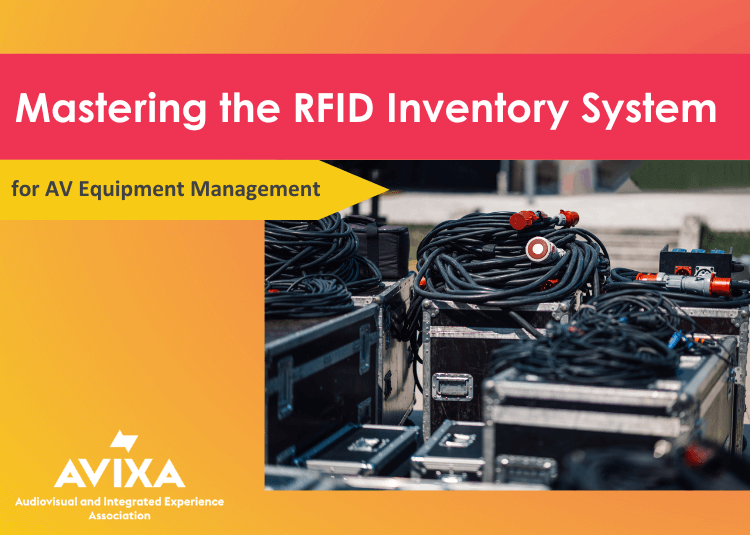AV Is Key to Telling Stories From a Distance
Now that distance will be one of the key virtues in venue and event design, large-scale storytelling will take on even more relevance, and that will mean lots of AV. But even beyond mega video displays, there will be a call for a multitude of sensory accompaniments to create more impact. Immersive audio, gesture tracking and other motion-triggered technologies, and precisely choreographed lighting spectacles will enhance the experience.
Several InfoComm 2020 Connected presenters spoke about the trends they’re seeing emerge from large-scale projects around the globe. From their perspective, true AV integration will be a major component of pulling the pieces together to tell stories across expanding canvases.
TIDE Spotlight: Don't Be So Static
In this special TIDE Spotlight session, Sasha Harris-Cronin, Principal with BBI Engineering and Maria Mortati, Principal Consultant with Maria Mortati Experience Design discuss the many compelling reasons people gather in public spaces and the equally numerous ways we can engage those audiences using technology. Now those spaces are changing to meet social distancing guidelines. How will technologies like AI, voice and motion-tracking help to create touchless experiences that still touch us emotionally?
“Things like vision tracking, which is still in its infancy, we can use our whole bodies to control things we can pass by. And soundscapes, immersive spaces and experiences just with sound, there are tons of opportunities there, and interactive lighting, LEDs … take advantage of those as elements …. We should remember to bring storytelling to the forefront, recently we’ve gotten a bit lazy and dependent on putting content on a touchscreen and poke at it.”
Sasha Harris-Cronin
Principal, BBI Engineering
The need to be in larger spaces than previously, and sometimes taking events outside, brings other storytelling elements in as well, including airflow, daylight, and vibration, so remember to include those in how you orchestrate an experience:
“Now is the time to revisit storytelling on massive screens, in large spaces in ways that we’ve forgotten to do. What can we do differently than movies and other narrative forms like the stage, there’s something very unique that we do, mapping that to a narrative experience is very important.”
Maria Mortati
Principal Consultant, Maria Mortati Experience Design
RELATED: Artist and Designer Maria Mortati Contemplates Shared Experiences in This New World
Designing Contact-Free Building Experiences
There will be an even higher standard now in compelling people to return to the workplace, and as we design contact-free building experiences using voice and gesture control, it’s important to remember the role of audio in communication and storytelling.
“We work with an audio artist or sound designer on almost every project. Audio is an important part of giving feedback cues. It indicates you’ve accomplished something — you get scanned, the ‘beep boop’ shows you’ve been scanned, and you can move on with your day. Pixels have a quantifiable value associated with them, you can buy and sell pixels …. But audio delivers a much more visceral and memorable experience. So, when you can match them together that enhances the built environment.”
Michael Schneider
Director of Media Architecture with the Digital Experience Design Group, Gensler
RELATED: Back to the Workplace: Harnessing Data in AV Designs
Technological Trends for Enhanced Visitor Experience in Asian Museums, Theme Parks and Experiential Venues
This session absolutely astounds with the possibilities for new experiential designs. By sheer scale and potential for growth alone, the Asian market is fascinating, but even more compelling is the human-centric design philosophy evinced by the projects highlighted here. Genuinely jaw-dropping beauty and wonder in these projects.
“The richness of content is the most important part of any experiential space. This is to capture the sense of the human mind, that develops emotion and memories — so it’s not just about technology, but the science, both the individual visitor as well as mass gathering of visitors are equally important. The bridge between technology and visitor experience is the key.”
Joe Fong
Deputy Managing Director, Electronics & Engineering Group of Companies
Sharing a video of the Madame Tussaud’s Singapore “Spirit of Singapore Boat Ride,” Fong pointed out that most of the displays in the experience are static. There is a lack of giant video screens. Instead, as Fong explains, “the simple usage of sensors and lighting effects captures the attention of visitors …. Technology is not just in the form of IT or digital content, but elements of our daily life, from water to fire to wind that can be recreated in the form of real sensation in the spaces.”
Read Next: Touchless Technologies Will Define the Next Brand Experiences
Brands are considering the use of experiential technologies that until recently seemed like a reach, but maybe now is their moment to create real connection.



.jpg?sfvrsn=81e7976_1)

